
Made famous by Adam Ondra screaming his way up a multitude of hard first ascents in the area's spectacular cave, the Flatanger region of Norway is quickly becoming one of the premier summer sport destination crags in Europe, attracting climbers from all over the world seeking its flawless gneiss. The crown jewel of the area and the primary reason most climbers visit Flatanger is the Hanshelleren cave, an enormous wave of overhanging granite comprised of what many refer to as the 'best rock in the world.'
The climbing in Flatanger isn't just limited to Hanshelleren, there are a number of other sport, trad, and bouldering crags in the region – but the cave is the main event. Despite its media reputation as a hardman's super crag, Hanshelleren delivers wonderful climbing in the sevens and eights, though due to the limited size of the area there aren't too many routes at each grade. Most routes are five-star classic in terms of rock quality and movement and developers seem to be constantly extending routes further and further up the cliff.
Climbing in the cave area can satisfy every taste and every level. Routes range from off-vertical technical adventures to rope-changing endurance sieges; the climbing becoming more challenging as you traverse the crag - from its leftmost on the more vertical wings to deep within the steepest part of the cave.
Generally, the climbing increases in grade the as you traverse the crag - from its leftmost on the more vertical wings to deep within the steepest part of the cave. The style is varied. Routes on the wings of the cave are long, technical outings up rounded features and crack systems, requiring endurance and a bit of gritstone finesse. The deeper into the cave you go, the more physical the climbing gets, culminating the rope-changing endurance sieges up some of the best rock you'll ever see.
Bouldering in the region has undergone a lot of development in the last decade and is very good. Glasøyfjellet is a ten-minute drive from Climb Flatanger and has some truly amazing rock, with grades ranging from grades from 6A to 8B+. Those looking for a wilder experience could check out the mythical Sjøveggen sea cliff – rumour has it that king line of the crag, The Fountain of Youth, has just 12 bolts in 75 meters of climbing…
The crag classics include:
Gulrot Tyven (6b+) (6b+), a long, juggy adventure through sandstone-esque granite features.
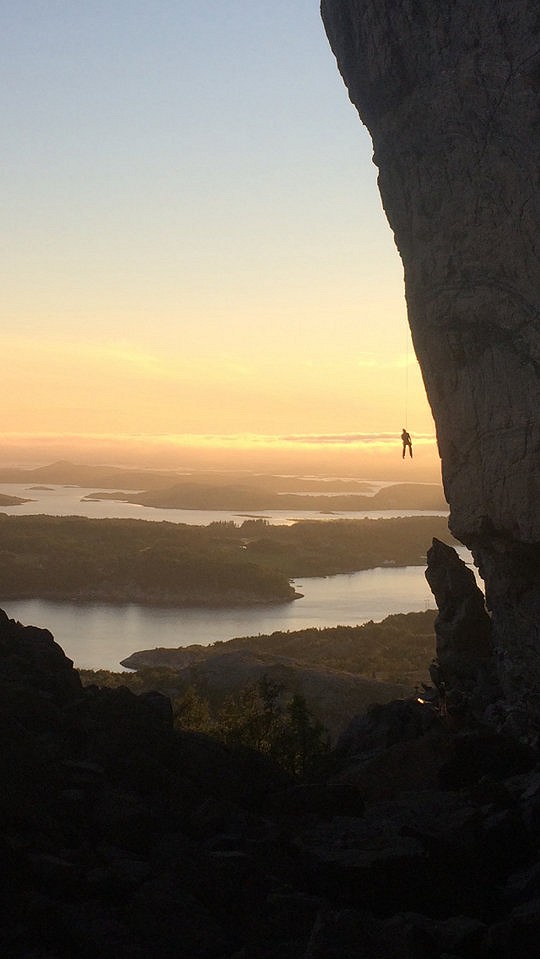
Hovdegjengen (6c) (6c), a short and powerful jaunt up a blocky weakness.
Kakestykket (7a) (7a), a striking line which traverses the edge of the cave, you'll wonder why you're pumped on a vertical traverse.
Tungt møblert (L1) (7a+) (7a+), slopey laybacking at its finest.
Syvsover (7b) (7b), breaks away from Tungt Moblert and offers very different climbing up sidepulls and cracks.
Kykkelikokos (7b+) (7b+), a long crack line in a stunning position with an end which spits off many.
Berntsenbanden (7c) (7c or 8a), the first extension to Hovdegjengen adds a powerful section into insecure laybacking, the second section tackles the bulging headwall all the way to the midway ledge.
Eventyrblanding (7c) (7c), a crimpy exposition followed by adventurous climbing on big sloping features.
Andre Hoyre (7c) (7c/+), a short and powerful route reminiscent of limestone with a few granite tendencies, great movement.
Flaggermusmannen (8a) (8a), tame start followed by bouldery climbing with a wild dyno, the bat hang rest at half height is tried by all.
Massih Attack (L1) (8a+) (8b), slopey granite strangeness involving a technical dihedral, powerful crux and fridge-hugging outro.
Nordic Flower (L1+L2) (8c) (8b+ or 8c), legendary endurance test piece with a bouldery start into flowing endurance climbing.
Nordic Plumber (8c) (8c), a massive link up incorporating some of the cave's best climbing.
Odins Eye (8c+) (8c+), a striking line tackling the cave's dark 'eye' feature, bouldery sections interspersed with taxing rests.
Thor's Hammer (9a+) (9a/+), an unreasonably long route which strikes fear into the heart of pros and punters alike, the king line of the cave.
Logistics:
When to Go
The season gets into full swing in summer months, though good conditions can be had any time from April to October. As global climate has shifted September & October have come to be the period those hoping for cold conditions roll the dice on, though your chances of rainfall increase significantly. Weather wise, the grace period between the long winters allows for generally temperate weather interspersed with disproportionately hot days, in which the Hanshelleren area transforms into a climber-cooking convection oven remedied only by hiding in the cave or under a boulder. The weather doesn't really get too wild during the summer, but you are close to the Arctic Circle so pack the puffa/raincoat.
The season gets into full swing in summer, the Flatanger Climbing Festival in late June marking the highpoint of conditions. The grace period between the long winter allows for some generally temperate weather interspersed with disproportionately hot days, in which the Hanshelleren area transforms into a climber-cooking convection oven remedied only by hiding in the cave or under a boulder. It doesn't really get too wild in terms of weather during the summer, but you are close to the Arctic Circle so pack the puffa.
The sun doesn't ever entirely set in July and August (mind-blowingly a headtorch isn't required) and therefore the climbing days can be as long as you'd like – it's not uncommon to leave the crag at 4pm and see an international mega-wad sauntering up to the cave for their daily redpoint.
The deeper you go into Hanshelleren, the more weatherproof it is. The wings can become wet quickly after rainfall, runoff and seepage coming through quickly, though a stiff wind can sort things out in fairly short order. The depths of the Hanshelleren cave are almost entirely weatherproof, bar seepage after extended periods of rain. Midges can appear on windless days, so either invest in a net hat or leave before the evening when they arrive in force, they show no mercy after about 8pm. A seasoned local has informed me that they usually arrive around the same time every year (10th ish of June) and are by far the worst the first 3 weeks. After that they die off to a point that you barely notice them by mid-August.
How to Get There
The closest major airport is in Trondheim, approximately a two and half hour drive from the Climb Flatanger campsite. Flights with Norwegian airlines are relatively cheap. To make it the rest of the way there are two options; if car-less you can either rent (it's not cheap) or catch a direct bus to Sjoasen, a town an hour from the campsite. If you email ahead to the campsite owner, they will book you a taxi to take you the rest of the way for only a modest fee. Alternatively, a public transport taxi can be arranged in advance of your journey by calling this number +47 02867 (number potentially subject to change). The system works on a taxi for bus principle, subsidised by the state. You need to call ahead (24 hours or so) for the taxi to be there and take you the rest of the way from Sjøåsen, but it will both pick you up and drop you there from wherever you choose to stay in the area as long as you call in advance and book a "bus" trip using the correct number – it's not a regular taxi service (which would be very expensive). If staying at the campsite you won't need a car to get groceries (you'll be able to charm a lift from someone, I'm sure) or climb in Hanshelleren, so a whole trip can be done carless (and even plane-less if you'd like to take the train).
Accommodation
The majority of climbers stay at the Climb Flatanger campground - the closest point you can pay to stay to the cave (20 minute hike), and also the parking area for the cave. Its location has made it the default, and while a number of rival campsites have sprung up in the region, Climb Flatanger coasts off its prime position. The amenities on site have not seen much investment in the last five years and are beginning to look tired. The cooking facilities are very limited (I recommend bring your own stove) and the showers are only hot at specific times of day (I am not qualified impart the arcane knowledge of the campsite showers). While you can use the campsite Wi-Fi, it only works in the vicinity of the house on site, so most campsite users won't be able to use it in the barn - the sofa-stocked hangout for campers. The price is reasonable (120 NOK per night) for Norway, though don't expect much from the amenities – though the on-site climbing wall is very useful in periods of bad weather. You can opt to stay in the house on site, though this can be very busy during the peak season.
The matter-of-factly named 'Flatanger Camping' offers a nearby alternative and has better amenities (in particular cooking facilities), though you do have to pay for a shower. There are a number of house rentals available via the usual channels, and if you can get a group together these can become quite economical.
Norway's wild camping is protected by the Allemannsretten – every person's right of public access, so as long as your tent isn't visible from roads or within 400 metres of someone's property you're good to camp/van in any number of the laybys in the surrounding wilderness. Though in an effort to encourage patronage Climb Flatanger charges for parking below Hanshelleren, making it harder for wild campers to commute rather than staying at the site for only a slight additional fee.

Remote Working
The signal in Flatanger is spotty and hot-spotting can be temperamental, though the much awaited 4G tower was finished on Glasøyfjellet in recent years, improving signal for many users. The Spar has reliable Wi-Fi and a seating area, though it's a community hub for the people of Lauvsnes so I'd be mindful of the locals and their favourite seat. The Wi-Fi in Climb Flatanger is good, though is only really useable in the house so is unavailable to campers, unless you fancy working from the grass outside the front door. Steinkjer library is a great place to work from, though quite a commute.
Food
There's a medium-sized Spar in the nearby town of Lauvsnes, which apart from operating the worst coffee machine I've ever used is well equipped, selling most of what you'll need bar wine and spirits which are sold exclusively at government run 'monopolies'. The Spar is a 15-minute car journey from the campsite and during the peak season you're likely to find other climbers willing to drive the car-less, though hitchhiking in Norway isn't the norm. Additionally, Lauvsnes has one pub/eatery which I wasn't able to sample, though I hear the burgers are good.
Flatanger is a renowned fishing destination which enthusiasts traveling from all over to sample, so if you fail to organize a ride to the store then there's always the option of taking up a rod and fishing for your dinner in the mackerel laden waters around the campsite. The Spar has a modest (yet expensive) supply of gear for the recreational fisherman, so if you're just looking to drop a line of a bridge and hope for the best you should have all you need. Those hoping to catch a 100-kilo halibut may want to arrive a little more prepared to avoid paying extra.
Guidebooks
The only up to date guidebook for the Hanshelleren cave at the moment is on 27crags, though this requires a premium membership, but you only need to sign up for a month to download the guide, making it a fairly cheap option. All the bouldering in the area can also be found on 27crags making it the best/only guidebook available for anyone wanting to explore the greater area). I have personally always favoured the approach of spending no money and pestering locals at the crag for beta, of which Hanshelleren has many, all of whom seem happy to share.
Gear
The nearest place to pick up any climbing gear is Steinkjer, there isn't much in the way of large shops once you leave the more populated parts of Norway. The area around Flatanger is a chalk dead spot - I highly recommended bringing your own large bag to sustain your trip. Or bring several and make a killing selling it to unprepared climbers. Another option for climbers who realise too late just how much rubber they need on their knees is to buy any missing gear online and order to Climb Flatanger. This results in the order ending up at the local Spar if delivered by Posten or at the supermarket in Vik if delivered by Postnord, usually within a few working days if ordered from a Norwegian store (VPG.no is arguably the fastest option with the best selection).
The nearest place to pick up any climbing gear would be Trondheim, there isn't much in the way of large shops once you leave the more populated parts of Norway. The campsite owners have recently begun to sell chalk, though its quality is dubious - I would highly recommended bringing your own large bag to sustain your trip.
The aforementioned Spar in Lauvsnes has a supply of fishing gear, though the selection isn't vast, affordable, or of particularly high quality.
Outdoor Shops
The nearest outdoor shop is XXL Steinkjer which has everything you could ever need for any outdoor activity - except climbing, which is inexplicable unrepresented. The range of camping equipment in XXL is great. If you forgot to pack your rock boots one of Trondheim's outdoor stores is the nearest place to pick up a replacement pair.
Climbing Walls
In order for the man himself to train and warm up effectively for his mega projects, Adam Ondra and his team organised the construction of spray wall in Climb Flatanger's barn. It's great (despite having exactly zero jugs) and gets a lot of traffic during periods of suboptimal weather. The owner of Climb Flatanger charges 50 NOK a go for a session on the wall if you aren't staying at the campsite. The nearest modern climbing centres are Trondheim Buldresenter and Grip Klatring Leangen (also in Trondheim).
Other Activities
There's endless fishing potential in the Fjords. Climb Flatanger rents out a rowing boat for short range excursions, or if you want to give your arms a well-earned rest a business in Lauvsnes rents out motorboats equipped with rods for the full fishing/Fjord cruising experience. Though there's no need to rent a boat to fish – shore fishing is often a viable option and if you choose the right spot you can hook you some seriously big fish. You don't even necessarily need a rod, dropping a line of the Lauvsnes bridge during tidal change can be very effective (don't complain to me if you end up catching nothing all trip).
There's endless hiking and boating potential in the extensive and wild Fjords. The campsite owners rent out a rowing boat for short range excursions o,r if you want to give your arms a well-earned rest, a business in Lauvnes rents out motor boats equipped with rods for the full fishing/Fjord cruising experience.
Norway's extensive old-growth woodland lends itself to excellent mushroom foraging. The magical birch forest around Climb Flatanger is blanketed in chantarelles and other more mysterious fungi, making for good eating - if you're sure what you're picking…
If you enjoy an active rest day, hiking in Flatanger is lovely. Hike highlights include summiting the peak behind Lauvnes, the classic hike to the top of Hanshelleren, and walking up the valley from Climb Flatanger to a spooky black lake full of strange fish. There's also a via ferrata up one of the cliffs near to the campsite which is an enjoyable jaunt, though not quite as adventurous as blazing a trail through the Norwegian wilds.
Hike highlights include summiting the peak behind Lauvnes or the classic hike to the top of Hanshelleren, both relatively mellow walks with a fantastic view payoff. There's also a via ferrata up one of the cliffs near to the campsite which is an enjoyable jaunt, though not quite as adventurous as blazing a trail through the Norwegian wilds.












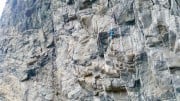
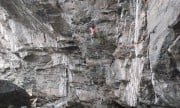
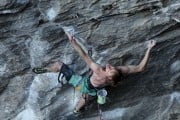
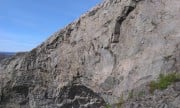


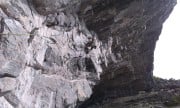
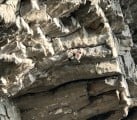
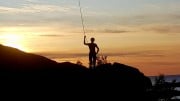


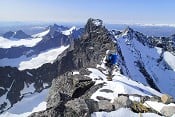
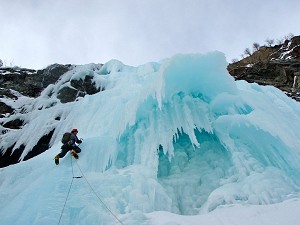




Comments